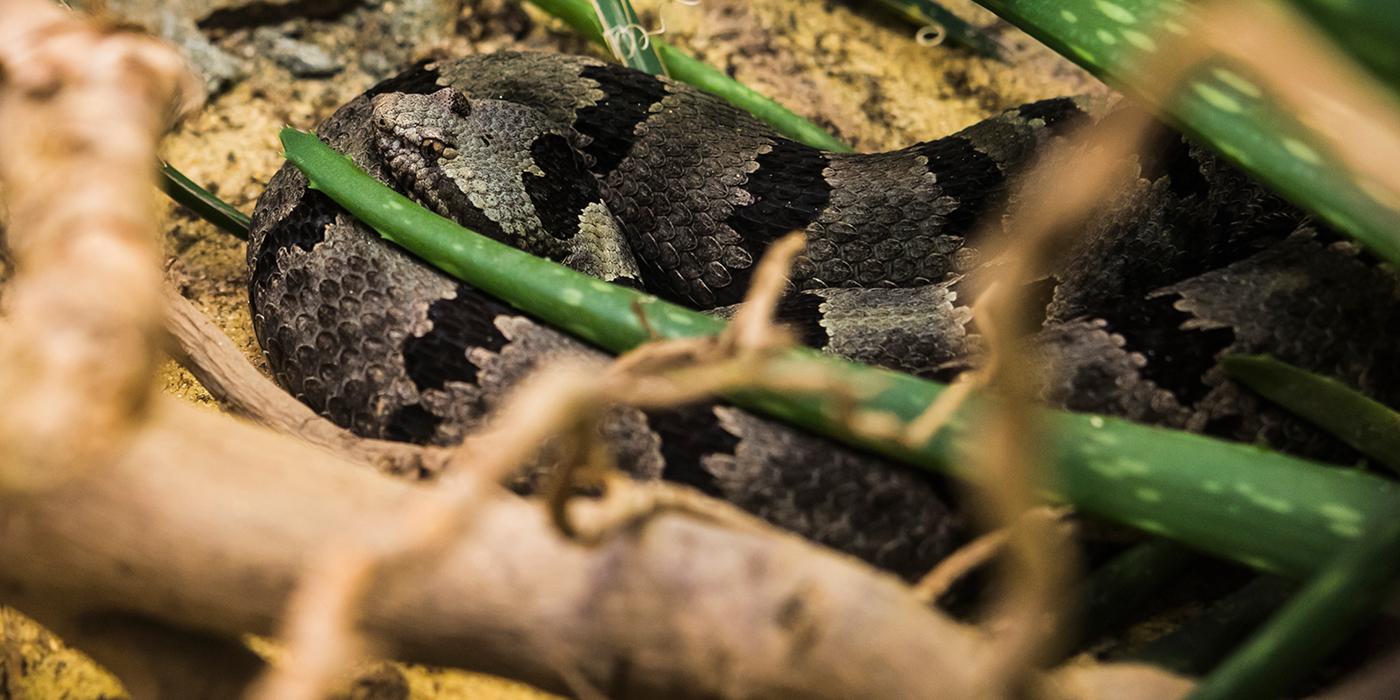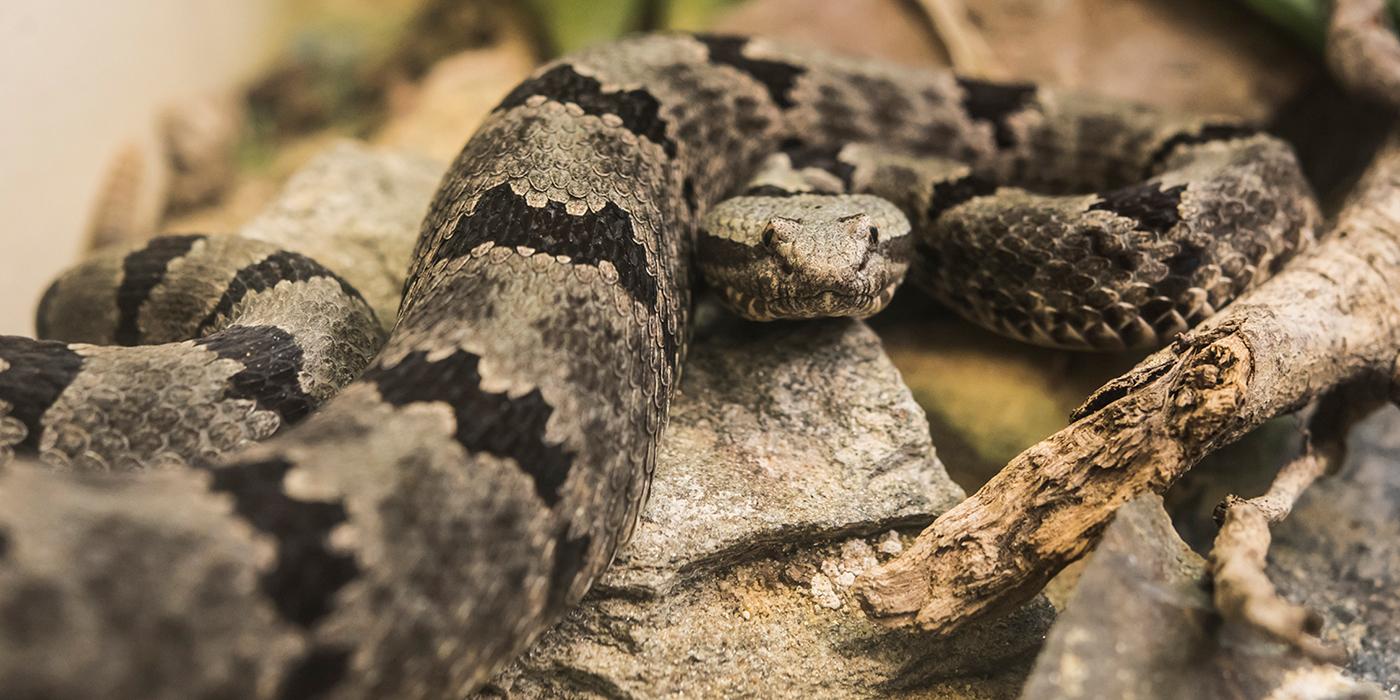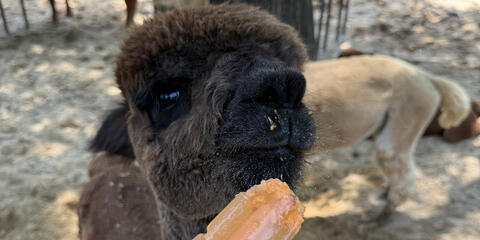Physical Description
The banded rock rattlesnake is a venomous species. It is light gray with dark, gray-black bands along the length of its body. This species is sexually dichromatic, meaning males and females differ in coloration. This snake's color variations are also dictated by subspecies and geographic location.
Size
Banded rock rattlesnakes are a small- to medium-sized species, typically reaching 60 to 70 centimeters (23 to 27 inches) in length, though some males may exceed 80 centimeters (31 inches). Males tend to be larger than females.
The banded rock rattlesnake's range overlaps with that of the gray-banded kingsnake, a species similar in appearance with alternating gray and black bands along its body. This similarity is likely an adaptation that developed as a form of mimicry. Resembling a banded rock rattlesnake helps protect the nonvenomous gray-banded kingsnake from predators that may mistake it for the venomous banded rock rattlesnake.
Native Habitat
This species is native to the southern U.S. and Mexico, ranging from southeastern Arizona to western Texas and south through northern and central Mexico.
It ranges across a variety of arid and semi-arid habitats, from grasslands and tropical deciduous forests to mountains, rocky flats and outcrops at elevations of 300 to 2,930 meters (1,000 to 9,600 feet). This animal can be found climbing into low vegetation or taking refuge under or among rocks, inside or under stumps, or in animal burrows.
Communication
As with other rattlesnake species, a banded rock rattlesnake will vibrate its tail when alarmed in an attempt to ward off potential predators. This rattling sound is created through the rapid vibration of a series of loose-fitting, interlocking scales on the tail. When vibration occurs, the edges of the scales rub against one another to create the characteristic sound of the rattlesnake.
Food/Eating Habits
Banded rock rattlesnakes prey on lizards, invertebrates, small mammals, birds and other snakes. They use venom to subdue their prey before swallowing it whole. The potency of the subspecies klauberi's venom varies throughout its range, suggesting that this snake's habitat and diet could be a factor in venom variations.
At the Smithsonian's National Zoo, banded rock rattlesnakes eat small rodents.
Reproduction and Development
Not much is known about banded rock rattlesnake reproduction. These snakes are thought to breed in the summer between late July and late August. Females may have between three and six young in a litter that average 21 centimeters (8 inches) in length.
Conservation Efforts
Minor threats to these snakes include urban development, collection for the pet trade and habitat disruption due to mining activity. This species is common throughout its range and known to occur in protected areas, but population status in the wild is unknown.
Help this Species
- Choose your pets wisely, and do your research before bringing an animal home. Exotic animals don’t always make great pets. Many require special care and live for a long time. Tropical reptiles and small mammals are often traded internationally and may be victims of the illegal pet trade. Never release animals that have been kept as pets into the wild.
- If you see a snake in the wild, leave it alone and encourage others to do the same. Don’t assume it is a venomous species, and don’t attack it if it doesn’t pose a threat to your safety. Tell your friends and family about the eco-services that snakes provide, such as keeping rodent populations in check.
Meet the Animals
The Smithsonian's National Zoo is home to two banded rock rattlesnakes of the subspecies Crotalus lepidus klauberi.





